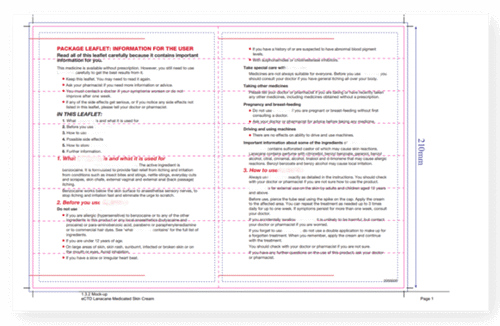Blog
Disposing of the paper leaflet: The challenges with Patient Information Leaflets
Mar 17, 2023
Making medicines information accessible for patients has, up to recently, been a challenging area for the healthcare industry to address.

Simon Zedlewski
Content Manager, Datapharm
In our latest emc user survey, 30% of UK patients either didn’t read their medicine’s physical paper leaflet, or they did but didn’t understand it. In other research, only 32% of patients said they completely understood the PIL (Patient Information Leaflet), and an even larger proportion of repeat users never read it.
What is a PIL?
A Patient Information Leaflet (PIL) is a document that provides information to patients about a specific medication. It explains how to use the medicine safely and effectively, as well as its potential side effects and interactions with other medications. Under MHRA regulations in the UK, the PIL is a legally required document for all medicines (if the label does not contain all necessary information) and currently accompanies the medicine in physical form.
PILs are also published on trusted medicines information databases, such as emc, in PDF format.
The current challenges surrounding PILs
The format
While the SmPC (Summary of Product Characteristics) is a document with clinical information which is specifically intended for HCPs, the PIL is designed for the patient who has no clinical knowledge or experience. It is important to ensure that vital safety information is included while being made as accessible and easy to digest for the patient as possible.
However, in the current world where patients use a mobile device on a daily basis, the PDF version proves hard to navigate and, in many cases, hard to read. The majority of PILs are currently in PDF format, but for patients with low digital literacy, or for those with visual impairments, viewing this information in a PDF can prove to be a frustrating experience which will in turn impact how much they absorb the information.

The above example of a PIL in PDF format is hard to navigate for the average patient. The reduced font size also makes it difficult to read for those who are visually impaired.
A manual process
For Pharma professionals, such as Regulatory Affairs or Medical Information teams, there are stringent processes in place when making changes in product safety information. Publishing in PDF format involves updating this information manually and then converting it into PDF format. The presence of this manual process is not only an inconvenience for Pharma but increases the potential for mistakes or rewriting of information.
Furthermore, although PILs can be converted from PDF to a more accessible format, this should only be done through experienced technical experts and will encounter issues where PDFs contain alternative text.
Sustainability
Currently, all medicine packs have a paper information leaflet, meaning over 100 billion physical PILs are in circulation globally every year. This equates to around 9 million trees or enough energy to fuel 50,000 homes for a year. With such a scale of paper production and a significant portion being thrown away, providing a physical leaflet for absolutely everyone must be questioned.
A true digital approach would benefit the environment not just by replacing the provision of physical leaflets with their medicines, but also by discouraging HCPs from printing a physical copy of the PIL unless the patient requires so.
The alternative would be to promote printing the document on demand, so both healthcare professionals and patients can benefit from it. This can be especially important for time-sensitive health information, such as updates on new medications or treatments.
What is the long-term solution to improving PILs?
Medicines safety information needs to be engaging and accessible for a variety of patient needs. Moreover, looking at the bigger picture, both HCPs and patients would benefit from a digital format and structure which improves how this information is accessed, updated and engaged with across different healthcare settings.
Datapharm has been working behind the scenes to improve the use of medicines safety information with a common standard for this data. Part of this work has involved supporting Pharma customers with a new format for PILs, named ePILs, where the information follows a standard structure – it can then be updated quickly and is easy for patients to engage with and access, whatever their individual circumstances might be.
ePILs contain the same compliant information required by the regulator in a web-friendly format, fully supported on emc (medicines.org.uk).
Learn more about medicines safety information for patients
There are plenty of discussions at the moment around the use of ePI, whether it be regulatory-driven or about integrating with electronic health records. Datapharm, as ever, is here to fully support emc customers with these changes, with new improvements coming in on the next version of emc.
When PILs are uploaded on emc in a PDF format, Pharma companies also have the option to convert these to ePILs, with a quick turnaround from our technical team.
Contact our team to find out how we can help you on your digital journey with product information.
